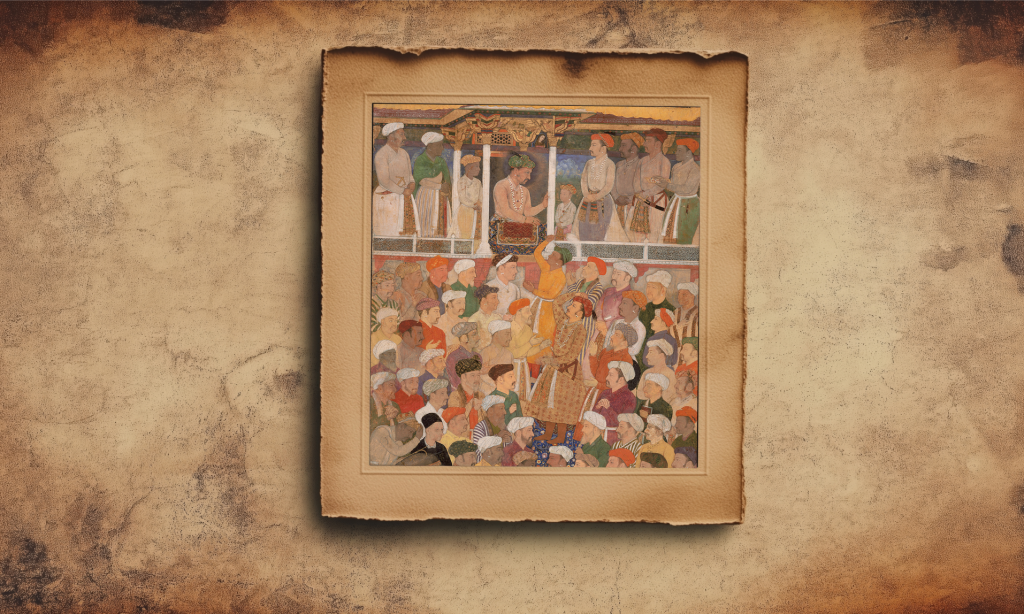Explore Tuzuk-i-Jahangiri, the autobiographical memoirs of Emperor Jahangir, masterfully translated and edited, revealing insights into his reign (1605-1627).
ANAND SINGH, RAI (d. 1827), vakil or agent of the Sikh kingdom, belonged to the famed Bhandan family of Batala founded by Bhag Mall, a wealthy adventurer. In 1809, Anand Singh was appointed an agent of the Sikh Darbar at Ludhiana, the British military station and political agency. He was later sent as the Darbar`s envoy to the British resident at Delhi. He had a good knowledge of Persian and English and accompanied Sir Charles Metcaife on the successful expedition against Bharatpur undertaken by Lord Combermere in January 1826, receiving on his return from Maharaja Ranjit Singh the title of Rai with a robe of honour. Rai Anand Singh died in 1827.
Explore the Auckland Papers for insights on 19th-century politics, the Sikh military, and the Anglo Afghan war, now accessible in London.
BHUPINDER SINGH, LIEUTENANTGENERAL MAHARAJA SIR (1891-1931), Knight Grand Commander of the Order of the Star of India, Knight Grand Commander of the Order of the Indian Empire, Knight of the Order of the British Empire, ruler of the Sikh state of Patiala, was one of the most colourful and influential Indian princes of the interwar years. Tall, robust, dashingly handsome, he was to the British the personification of the Punjabi martial races, a veritable "flower of Oriental aristocracy." In his own eyes, and in the eyes of many of his coreligionists, he was the temporal leader of Sikhism.
CUNNINGHAM, JOSEPH DAVEY (1812-1851), the first British historian of the Sikhs (his A History of the Sikhs was published in London in 1849), was the eldest of the five sons of Allan Cunningham, a noted poet and playwright. Born at Lambeth on 9 June 1812, Joseph had his early education in private schools in London where he showed such a marked aptitude for mathematics that his father was advised to send him to Cambridge. But as the young boy was more keen on becoming a soldier, a cadetship in the East India Company`s service was procured him through the good offices of Sir Walter Scott.
Discover the journey of General Gulab Singh, a key figure in Sikh history, from his rise in Ranjit Singh's army to his role as Governor of Peshawar.
Explore Jamal Uddin Sayyid's 19th-century Pan-Islamism efforts against Western dominance and his involvement with Maharaja Duleep Singh.
Discover the role of the Khalsa Defence of India League in boosting Sikh military enlistment during WWII and preserving their special army position.
Discover Maharaj Singh's battle against British rule in Punjab: a saint turned revolutionary who inspired many during the Anglo-Sikh wars.
NIHAL SINGH AHLUVALIA (d. 1852), son of Fateh Singh Ahluvalia, succeeded to the Ahluvalia chieftaincy on the death, in 1836, of his father. In his youth he was a favourite of Maharaja Ranjit Singh and was the recipient of the towns of Nur Mahal and Kalat Majra and other occasional bounties. Upon succession, however, he was subjected to a fee of 1,000,000 rupees. His younger brother, Amar Singh, who lived in Lahore, conspired to usurp the gaddi and was encouraged in his ambition by the Maharaja as well as by his minister, Dhian Singh.







